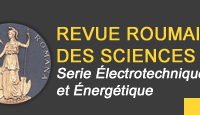| |
|
Paper title: A FORMAL UML-RELIANT SOFTWARE ENGINEERING APPROACH TO FINITE ELEMENT SOFTWARE DEVELOPMENT FOR ELECTROMAGNETIC FIELD PROBLEMS
Author(s): SAMUEL RATNAJEEVAN HERBERT HOOLE, THIRUCHELVAM ARUDCHELVAM,
Abstract: Much of today’s finite elements-based software for electromagnetic field computation
has been developed on an ad hoc basis, often as an outgrowth of ongoing research
whether at universities or agencies like NASA. “Design” is seen as the execution of
computational algorithms yielding the computed design, rather than the holistic process
that begins with the design of the software itself and ends in the computations using
that software. As a result finite element software product development has not been
informed by the benefits of starting with a rigorous requirements analysis and going
through the normally mandated design process in any rational software engineering
development process. This paper examines such a development and identifies the
various benefits that arise from that process. Of particular note is the ability to have a
list of software components from which we pick the most appropriate to the problem
being addressed – thereby giving users choice to suit their particular computational
environment, be it in methods or hardware; and the ability to implement a model of the
design using UML and then transform that into source code using modern facilities.
The latter makes porting to new programming languages easy and ensures that the finite
element code is proper rather than simply working. Reengineering legacy software by
transforming existing code to UML for analysis becomes possible. And the planning
document leads to all goals being realised and is easily transformed into a user manual.
Keywords: Electromagnetic field, Finite element, UML Year: 2011 | Tome: 56 | Issue: 1 | Pp.: 5-14
Full text : PDF (244 KB) |
|
|
|



